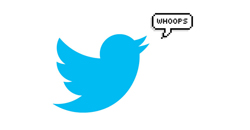 Brands are doing some wonderful and cool things on social media these days – Oreo instantly comes to mind. Their YouTube channel alone has over 82 million views. In fact, according to eMarketer 2014 was going to be “the year of social” for brands. However, things don’t always go according to plan – especially if there is no plan in place. Inc’s 2014 social media blunders is an interesting roundup and seems mostly rooted in a lack of training, governance and following best practices. I am going to focus on a few #fails worth mentioning and what you can do to avoid them.
Brands are doing some wonderful and cool things on social media these days – Oreo instantly comes to mind. Their YouTube channel alone has over 82 million views. In fact, according to eMarketer 2014 was going to be “the year of social” for brands. However, things don’t always go according to plan – especially if there is no plan in place. Inc’s 2014 social media blunders is an interesting roundup and seems mostly rooted in a lack of training, governance and following best practices. I am going to focus on a few #fails worth mentioning and what you can do to avoid them.
The Accidental Tweet
Last November, the CFO of Twitter, Anthony Noto, made the rounds online because he tweeted out internal corporate communications to the public regarding an acquisition. He mistakenly thought he was sending the message via DM. It was reported that that Mr. Noto was new to the platform. A few months later his account was breached.
- Never use any public social media platforms to transmit internal corporate communications. This should be included in all social media policies.
– Note: Social policies need to address branded and individual accounts regarding confidential information. - All employees (even especially C-Suiters) need be trained on tools and protocols
- This also speaks to data security and why companies need to address where/how confidential information is shared and stored
Know Thy Hashtag
The Community Manager at DiGiorno’s Pizza probably wished that September 8, 2014 happened a little differently. Not checking the meaning behind #WhyIStayed, which was a trending conversation on domestic abuse, the Community Manager used it and added “because you had pizza”. Yikes!
- Always do your homework! Leveraging what’s trending now on Twitter doesn’t preclude doing some basic due diligence first.
- On the plus side, DiGiorno’s owned up and personally responded to each post
Exploiting a Disaster
There are so many things wrong with the American Apparel Challenger situation. The worst offense is that they did not learn from the 2012 scandal that used Hurricane Sandy as the base of a marketing tactic. They offered a sale to affected states with a CTA that read, “in case you are bored during the storm – 20% off everything.” This time, American Apparel modified an image of the just exploded Challenger shuttle and attached it to a blog about the Fourth of July. Once they were called out by the outraged public, they apologized and blamed a young social media manager who was born after the event.
- The 2012 event should have immediately triggered a process overhaul and employee training
- The brand should have taken responsibility on a corporate level
- Where is the oversight, vetting and approval process in terms of publishing or reusing content?
Brand Censorship
The cardinal rule of social engagement lies with giving your customers a way to communicate and engage with you. That conversation is not always sweetness and light – but that’s part of what makes it genuine and powerful. Smucker’s missed the mark when they removed negative posts on their Facebook page regarding their position on GMOs.
- You can respond and suggest continuing the conversation offline, but only remove user generated content if it is an illegal, illicit, offensive or spam
- A crisis escalation process needs to be in place that is scenario-based
- The PR and Social teams need to be plugged in with each other – especially if there is the potential risk of controversy
These are painful reminders that social media needs proper planning. My four takeaways are:
- Know your best practices like you do your ABC’s
- Review and update employee communication guidelines and social policies
- Develop escalation processes and protocols if controversy arises
- Ensure that all employees are trained on all of the above
What are your thoughts?

Senior Consultant
Jenny is a digital content strategist, who leads customer-centric engagements that focus on understanding B2B buying behaviors and developing custom roadmaps.
Her expertise is creating buyer personas and mapping digital content journeys to assess the multi-channel user experience. She helps clients operationalize plans across workstreams and identifies processes to create efficiencies in marketing operations. Jenny also has extensive time under her belt developing and managing customer advocacy programs and community building.
She has helped a diverse group of organizations including Cisco, VMware, Verizon, Microsoft, Dell, BMO Harris, Capital One and many others become more customer-centric.




